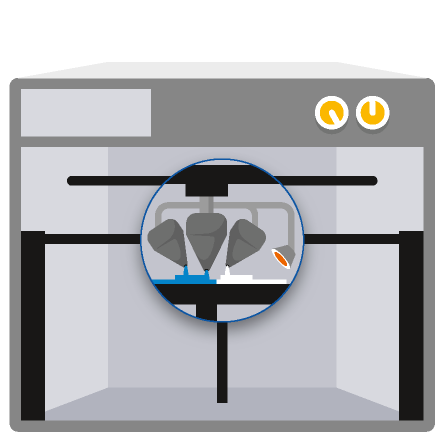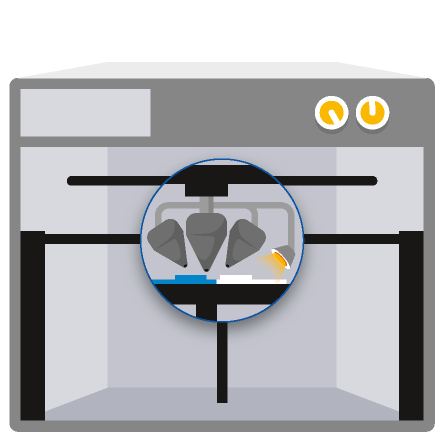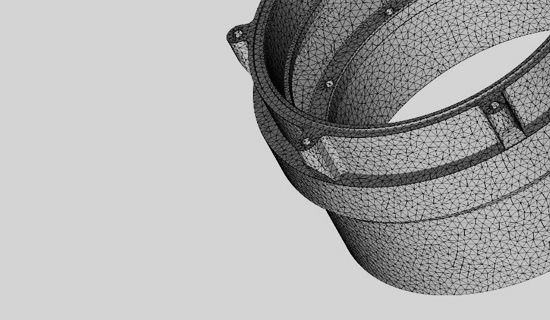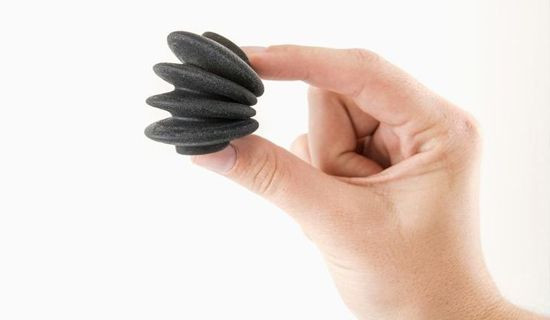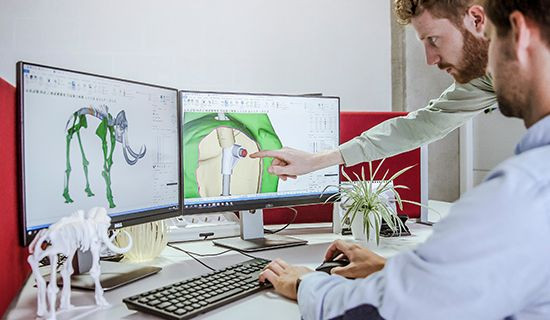The Agilus family of materials is a set of flexible, rubber-like resins for PolyJet. Agilus is translucent while Agilus Black is a vivid black. Both Agilus materials provides superior tear-resistance and elongation at break making them suitable for prototypes of rubber components like seals, non-slip surfaces, overmolding, etc. Agilus materials can be combined with Vero materials to simulate specific Shore values, influence tensile strength and tear resistance. We offer six composite materials with preset combinations of mechanical properties: Shore A40 - Shore A50 - Shore A60 - Shore A70 - Shore A85 - Shore A95.
Technical Specifications
| Standard lead time | Minimum of 3 working days (offline orders) 4 working days (online orders) |
| Standard accuracy | 0.1 – 0.3 mm (varies depending on geometry, part orientation and print size) |
| Layer thickness | 0.032 mm |
| Minimum wall thickness | 1 mm |
| Maximum part dimensions | 490 x 390 x 200 mm (offline orders) 350 x 250 x 100 mm (online orders) |
| Interlocking or enclosed parts? | Yes |
| Surface structure | Unfinished PolyJet parts have a smooth surface, which can be further smoothed as desired through finishing processes. |
Datasheet
Agilus Black
| MEASUREMENT | VALUE | STANDARD |
|---|---|---|
| Tensile Strength | 2.4 – 3.1 MPa | ASTM D-412 |
| Elongation at Break | 220 – 270% | ASTM D-412 |
| Shore Hardness (A) | 30 – 35 | Scale A |
| Tensile Tear Resistance | 4 – 7 Kg/cm | ASTM D-624 |
| Compressive Set | 6 – 7% | ASTM D-395 |
| Polymerized Density | 1.14 – 1.15 g/cm³ | ASTM D-792 |
Actual values may vary with build condition. Shore values are provided by Stratasys.
Composite Materials
| Primary material: VeroWhitePlus Secondary material: Agilus Black |
DM_9840/ Shore A40 |
DM_9850/ Shore A50 |
DM_9860/ Shore A60 |
DM_9870/ Shore A70 |
DM_9885/ Shore A85 |
DM_9895/ Shore A95 |
|---|---|---|---|---|---|---|
| Tensile Strength (MPa) | 0.5 – 1.5 | 0.5 – 1.5 | 2 – 4 | 2 – 4 | 4 – 8 | 15 – 25 |
| Elongation at Break (%) | 150 – 170 | 130 – 150 | 80 – 100 | 50 – 70 | 50 – 60 | 25 – 35 |
| Shore (Scale A) | 28 – 40 | 36 – 50 | 46 – 60 | 57 – 70 | 70 – 85 | 80 – 95 |
| Color | Black | Black | Black | Black | Black | Black |
How Does PolyJet Work?
PolyJet works by jetting photopolymer materials in ultra-thin layers onto a build platform. Each photopolymer layer is cured by UV light immediately after it is jetted, producing fully cured models that can be handled and used immediately, without post-curing. The gel-like support material, designed to support complicated geometries, is subsequently removed by water jetting.


